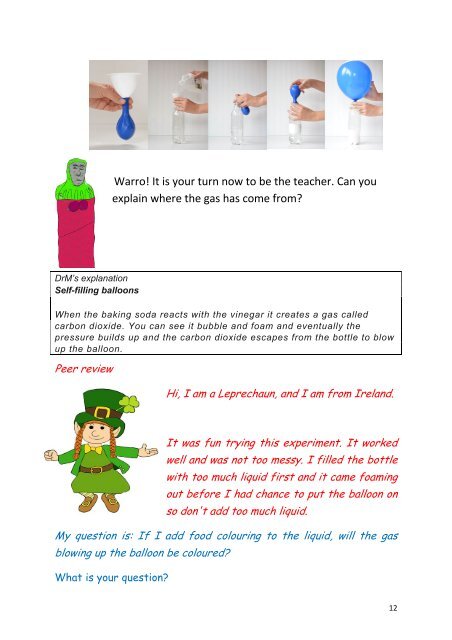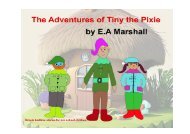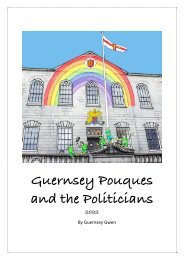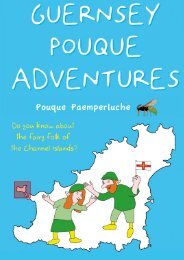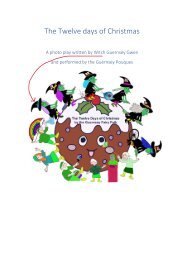Science Experiments to try at Home
Simple science experiments written by secondary students for primary students to do at home.
Simple science experiments written by secondary students for primary students to do at home.
Create successful ePaper yourself
Turn your PDF publications into a flip-book with our unique Google optimized e-Paper software.
Warro! It is your turn now <strong>to</strong> be the teacher. Can you<br />
explain where the gas has come from?<br />
DrM’s explan<strong>at</strong>ion<br />
Self-filling balloons<br />
When the baking soda reacts with the vinegar it cre<strong>at</strong>es a gas called<br />
carbon dioxide. You can see it bubble and foam and eventually the<br />
pressure builds up and the carbon dioxide escapes from the bottle <strong>to</strong> blow<br />
up the balloon.<br />
Peer review<br />
Hi, I am a Leprechaun, and I am from Ireland.<br />
It was fun <strong>try</strong>ing this experiment. It worked<br />
well and was not <strong>to</strong>o messy. I filled the bottle<br />
with <strong>to</strong>o much liquid first and it came foaming<br />
out before I had chance <strong>to</strong> put the balloon on<br />
so don't add <strong>to</strong>o much liquid.<br />
My question is: If I add food colouring <strong>to</strong> the liquid, will the gas<br />
blowing up the balloon be coloured?<br />
Wh<strong>at</strong> is your question?<br />
12


